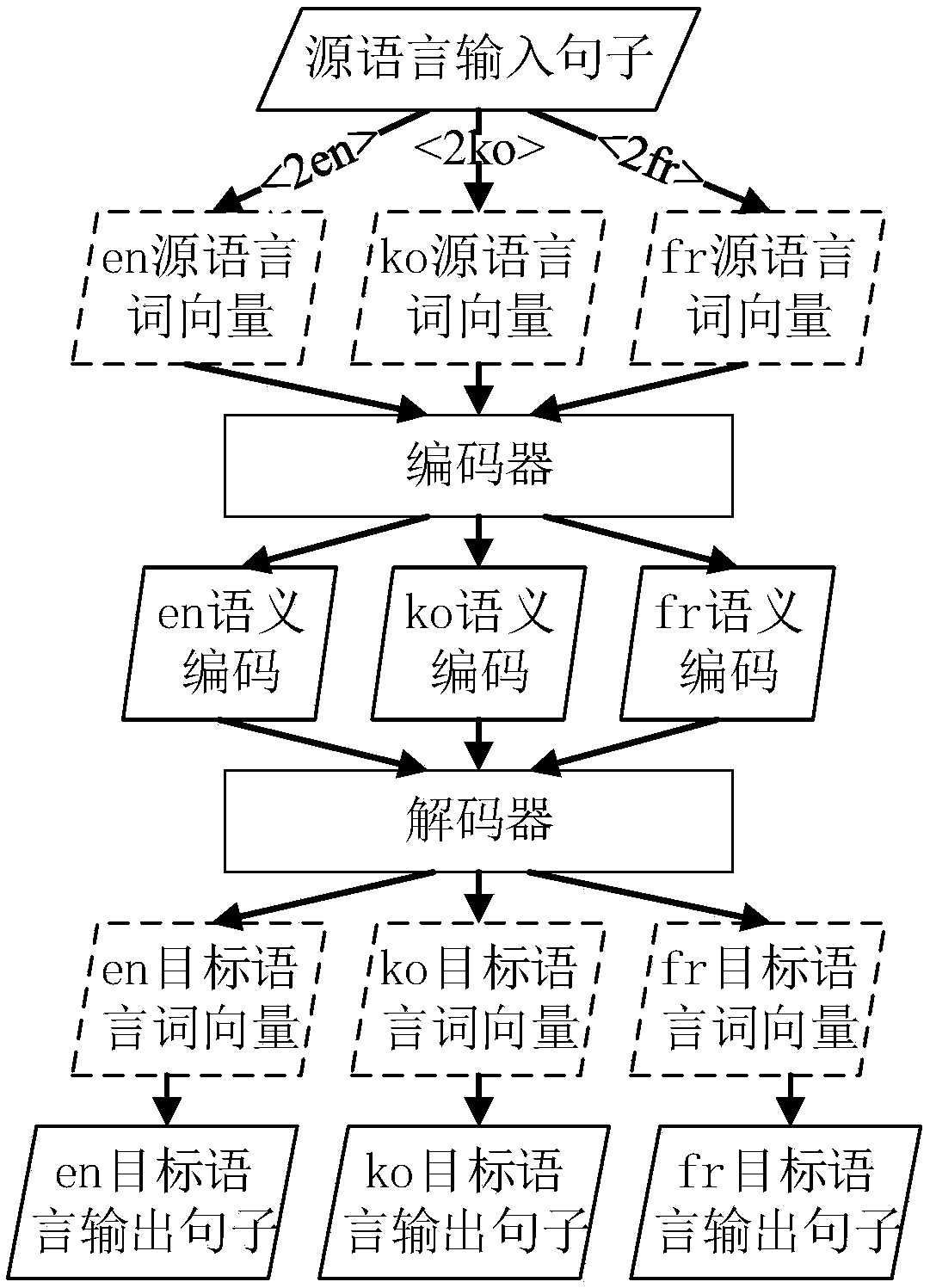Machine translation method, training method, corresponding device and electronic equipment
A machine translation and target language technology, applied in the field of natural language processing, can solve problems such as consumption of computing resources, high labor costs, and no improvement in algorithms, so as to improve processing efficiency, avoid multiple calculations, and reduce the amount of calculation.
- Summary
- Abstract
- Description
- Claims
- Application Information
AI Technical Summary
Problems solved by technology
Method used
Image
Examples
Embodiment 1
[0050] The embodiment of the present application provides a machine translation method, such as image 3 As shown, the method includes:
[0051] Step S301: Obtain the semantic code corresponding to the source language input text.
[0052] In practical applications, the source language input text is generally a sentence input in the source language (that is, the smallest unit of translation processing), and the paragraphs, chapters, etc. input in the source language will be automatically split into sentences for processing.
[0053] In the embodiment of the present application, the semantic code corresponding to the source language input text is obtained, that is, the semantic code corresponding to the original input sentence is obtained directly, and then the obtained semantic code can be reused in step S302.
[0054] Step S302: Based on one or more target languages, decode the semantic codes respectively to obtain output texts in one or more target languages.
[0055] In th...
Embodiment 2
[0061] The embodiment of the present application provides a possible implementation manner as shown in the second embodiment on the basis of the first embodiment.
[0062] Specifically, since the semantic code corresponding to the source language input text acquired in step S301 needs to be reused, this embodiment of the present application may maintain a cache.
[0063] Then, after step S301, the semantic code can be stored in a preset cache, so that it can be used for subsequent decoding to different languages.
[0064] Furthermore, in step S302, for translation in any target language, the semantic code is obtained from the cache, and the semantic code is decoded based on the target language.
[0065] It can be understood that for the translation between two languages, it is only necessary to obtain the semantic code once from the cache and decode it based on the target language. For translation between multiple languages, semantic codes need to be fetched multiple times fr...
Embodiment 3
[0067] On the basis of Embodiment 1 or Embodiment 2, the embodiment of the present application provides a possible implementation as shown in Embodiment 3, wherein the machine translation method provided in the embodiment of the present application is applied to a machine translation network, the The machine translation network is still based on the design principles of encoder-decoder, such as Figure 4 As shown, including the pre-trained word vector space model, encoder and decoder.
[0068] Wherein, the word vector space model includes word vectors in multiple languages, and these word vectors in multiple languages are based on semantic alignment. That is to say, the word vectors of each language are aligned in the same vector space. Compared with the relatively independent word vector spaces of different languages in the prior art, the embodiment of the present application applies the word vector alignment to the translation task without the need for Other changes to ...
PUM
 Login to View More
Login to View More Abstract
Description
Claims
Application Information
 Login to View More
Login to View More - R&D
- Intellectual Property
- Life Sciences
- Materials
- Tech Scout
- Unparalleled Data Quality
- Higher Quality Content
- 60% Fewer Hallucinations
Browse by: Latest US Patents, China's latest patents, Technical Efficacy Thesaurus, Application Domain, Technology Topic, Popular Technical Reports.
© 2025 PatSnap. All rights reserved.Legal|Privacy policy|Modern Slavery Act Transparency Statement|Sitemap|About US| Contact US: help@patsnap.com



